It was one year ago that volcanic ash began billowing out of the La Soufrière volcano on the main island of St. Vincent and the Grenadines—the first time in 42 years. Vincentians were alerted to increased activity within the volcano and knew the eruption was imminent, but there was little that could prepare the community for the first massive eruption on April 9th and weeks of continued eruptions and ash fall that would ensue.
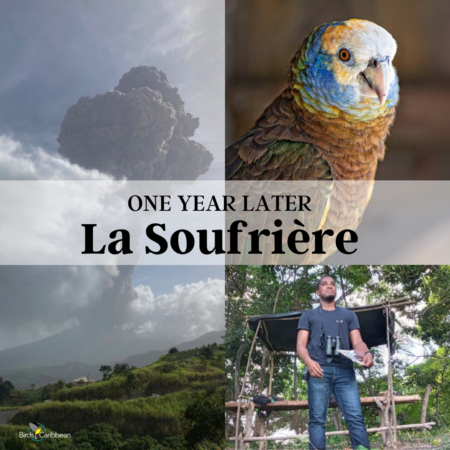 Communities in the north were forced to evacuate, moving south towards safety and away from the intense ash fall. The wildlife in the area attempted a similar trajectory. Unable to forage in the wild as normal, however, and disoriented by the ash fall, many wildlife species – including the vulnerable St. Vincent Parrot, the National bird – were in danger.
Communities in the north were forced to evacuate, moving south towards safety and away from the intense ash fall. The wildlife in the area attempted a similar trajectory. Unable to forage in the wild as normal, however, and disoriented by the ash fall, many wildlife species – including the vulnerable St. Vincent Parrot, the National bird – were in danger.
BirdsCaribbean jumped into action, joining concerned wildlife conservation organizations to create an emergency group* that quickly raised funds and provided much-needed assistance to the Forestry Department working on-the-ground in St. Vincent. Key partner, the Rare Species Conservatory Foundation (RSCF), provided critical help in getting all the supplies purchased by BirdsCaribbean, their organization, and our group to St. Vincent. Items included boots for all Forestry staff, binoculars, cutlasses, knives, backpacks, two-way radios, GPS units, Go Pro and Canon cameras, respirators, camping gear, ponchos, veterinary supplies, parrot food, chain saws, aviary wire, and many other tools and hardware to repair and enhance the parrot aviary.
Sincere thanks to our BirdsCaribbean community who responded quickly and generously to our appeal to aid St. Vincent in their hour of need. Your support provided the emergency funding needed to rescue and care for threatened parrots facing a loss of habitat and food, and for the long and hard work that followed, including clearing trails and waterways, searching for injured parrots and other wildlife, providing supplementary food (fresh fruit, nuts) to parrots, and repairing park infrastructure and the parrot aviary. Your support also enabled the Forestry Department to conduct a simultaneous census of the St. Vincent Parrot at 20 watch points and 10 “gap watches,” from 17-21 Sept, 2021 — the first complete census of the population since 2010.
To mark one year since the devastating eruptions, we caught up with Bradford Latham, Program Officer for Wildlife and Law Compliance and Enforcement in the St. Vincent and the Grenadines Forestry Department, to learn how the island, its people, and the wildlife are recovering.
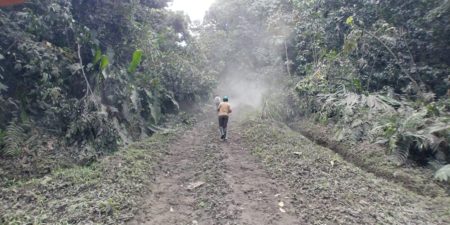
Take us back to the first few days of the eruptions. What was that like?
“The 9th of April was a Friday and I was busy making preparations. I am in charge of the Nicholls Wildlife Complex at the St Vincent Botanical Gardens, where we do captive breeding, so I was installing water tanks at the aviaries, trying to ensure that I had extra water storage in place for the care of the birds in case of an eruption – which we were expecting. I had just completed that task when I learned that La Soufrière had erupted.”
Bradford recalls that people in the community were nervous but admits that the severity of the event was not fully grasped because the effects could not yet be seen. It wasn’t until the following morning, however, that the gravity of the situation began to unfold.
“On Saturday morning everything was gray. Everything was gloomy, and there was ash everywhere. Then, the water authority had to turn off their systems to prevent clogging – so that essential service was affected.”
“Thankfully, I had already gotten some assistance from the Graeme Hall Nature Sanctuary in Barbados to prepare and secure the captive birds at the Nicholls Wildlife Complex. We needed plastic sheeting to try to secure the birds and we also needed dried foods, because getting fresh fruit would have been a challenge – and it was indeed. So, the dried nuts and fruit, and other food that we quickly received from our international partners was really useful.”
How did you cope with the situation? What were some of the short to medium-term solutions that were implemented by the Forestry Department and partners?
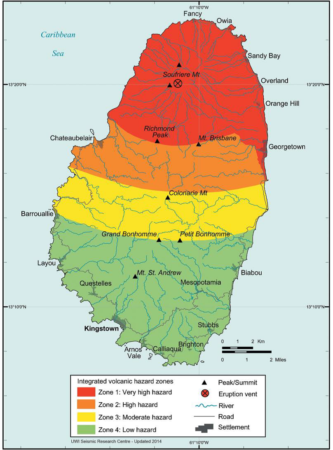
“The plight of the birds in the forest was of major concern, given the heavy ash fall that would have affected food availability for these species. An emergency group was formed, which comprised BirdsCaribbean, Rare Species Conservatory Foundation, Flora and Fauna International (FFI), UNDP Reef to Ridge Project, Houston Zoo, IWECo Project St. Vincent and the Grenadines, SCIENCE, and the St. Vincent and the Grenadines Environmental Fund (SVGEF). This group provided invaluable support to on-the-ground efforts and helped to plan what would be done if food was unable to be collected from the countryside – which was really destroyed.
We considered ideas to be able to help wildlife species, especially the St. Vincent Parrots, and we came up with a plan of creating feeding stations. We made platforms and sourced daily fresh fruits for the stations. We cleaned the fruits, cut them up, and went out on mornings and evenings to replenish the platforms in some of the major parrot habitats—especially near La Soufrière, such as Cumberland, Congo Valley, and Jennings.
We prioritized the areas that were most impacted. We concentrated our efforts within the orange and yellow zones, just off the red zone area, to provide some assistance of water and food to these wildlife species.
We started in April, in the weeks following the first eruptions, and continued through the month of April, May and up to June. Once the rains began to fall in June and certain trees began fruiting, like the mango and the plum rose, we curtailed the feeding assistance because we knew that there were now available food sources for the parrots and other wildlife species.”
Tell me about the Parrot Surveys conducted in September, 2021. Did you see many birds? Did you get a sense that they are faring well?
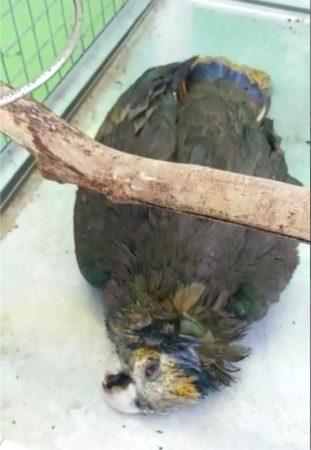
“After the volcanic eruptions, we decided to do a rapid assessment to get a better understanding of what was happening to the parrots because we hadn’t had a census or a check for parrots since 2010—there was a long lapse. I recall one time that the team was out clearing rivers and they came across a bird that was suffering and later died, as a result of ash inhalation. So we were preparing ourselves for the worst impact on wildlife.
We completed the assessment in one week, for the first time. All five major sectors of 20 watch points were done in one week, from Tuesday 17th September to Friday 22nd September, 2021. The team of over 60 participants monitored the different sectors and also areas what we call gap watches, where we know a smaller numbers of birds exist. A very rough estimate suggests that parrot numbers are in the high hundreds, indicating the birds are resilient and many managed to survive the volcano and its aftermath. However, we note that updated methodology and analyses are needed to better assess parrot numbers.
We also noticed that many of the birds that were near the Red Zones, the La Soufrière areas, successfully moved to safer areas. That’s what we picked up. Prior to the eruption, we used to have a lot of cases of parrot predation on crops in the northern part of the island. This is something that we are still going to be looking out for as the parrots seem to be moving back into those areas. Crop predation is a concern. So, we will be looking at the food sources that are available in the forest to try to understand why the parrots are moving towards farmland areas.”
How quickly has the forest been recovering and trees flowering and fruiting again for the birds?
“The recovery is really excellent in the areas within the yellow and green zones and even the orange zones. The greatest impact on habitat is the northern section, on the slopes of La Soufrière. The foliage was really heavily damaged but now we can see that it’s coming back, there’s a lot of greenery. So, it’s recovering well. We have been getting a lot of rain, and there’s still some danger of lahars (mud slides) and flash flooding. We conducted some coastal assessments, going out on the boat and taking some photos. One of the follow-up things that we would really like to do is go back again to see how things have changed, in terms of the recovery and vegetative growth in those areas.”
St. Vincent and the Grenadines’ Forestry Director, Fitzgerald Providence, recently visited an area impacted from the volcanic eruptions. He shared photos of some of the vegetation now growing in the shade of the La Soufriere volcano and commented, “The process of regeneration is evident along the eastern slope of La Soufriere. What was described as destruction by some, shows evidence of how our island became a land so beautiful.” He noted, however, that the western slope was hardest hit with pyroclastic flows and that he planned to visit there soon.
What do you think can be done currently to help the situation on the ground? What are some of the things that the Forestry Department needs right now, as far as support?
“One area that we need support in is research methodology. We’ve had some general training but it would be good to be able to develop something that is specific to a particular species. To know when might be the best time to go looking and where to be looking for this species, knowing the nest type, and the behavior. For example, there’s not much known about the Whistling Warbler, an Endangered songbird endemic to St. Vincent; it will be good for us to look at doing more research on this species. Also, we have other endemic species such as the endemic tree frog and the whistling frog that may have been impacted by the eruption. The uniqueness of endemic species is important to the country, so it would be good to know how well they are doing and learn about their populations. These are the areas that we would really like assistance in, training and capacity building, to better monitor and manage these endemic species that we have. We would also like assistance for our environmental education program – learning how to prepare a blog, for example, and taking better photos in the field.”
Are you optimistic that the on-island bird population will return to pre-eruption numbers in the near future?
“The parrots are resilient. We have seen areas where numbers were few – especially areas that we recorded as gap watches – and we have recorded higher numbers in those gaps. I believe that eventually the numbers will really recover.
The methodology that we’re using to monitor the parrots needs to improve, however. It is scientific, but there are gaps that we really need to improve in order to get a better estimate of the parrot’s population size and monitor this over time.
These are areas that we are hoping to build upon in the near future, so that we may not be reporting a higher number than what it actually is on the ground. Or vice versa, that we may be reporting numbers that are lower than what is actually represented in the wild. We have a young staff and the training and capacity building is something that is really needed.”
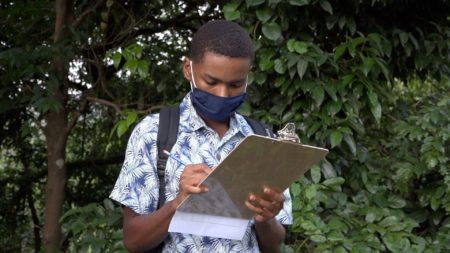
Speaking at an outdoor field exercise in August 2021, organized by the Forestry Department to raise awareness about and provide training in parrot census activities, Minister of Agriculture, Forestry, Fisheries, Rural Transformation, Industry and Labor of Saint Vincent and the Grenadines, the Hon. Saboto Caesar, acknowledged and thanked Forestry workers and international conservation partners for their continued dedication to protecting the island’s national bird, especially in the wake of varied natural disasters in recent years that have adversely affected the birds and their habitat.
“The Amazona guildingii, the national bird of St. Vincent and the Grenadines, is very dear to us. Recently, we had 32 eruptions of La Soufriere and we are all aware of the negative impact this has had on the habitat of the national bird. We also had Hurricane Tomas on October 30, 2010, that destroyed a significant percentage of the habitat of the national bird. I want to thank all the international agencies and to thank the hard working staff of the Forestry Department for the excellent work that they continue to do. I also want to encourage all the farmers and all forest users to respect the laws of St. Vincent and the Grenadines.”
Continued Work to Conserve St Vincent’s Forest Birds
BirdsCaribbean Executive Director, Dr. Lisa Sorenson, RSCF, and other partners, continue to monitor updates and maintain contact with key members of the St. Vincent and the Grenadines Forestry Department with a view to providing continued assistance, where needed. Dr. Sorenson welcomed the reports of resilience outlined in the most recent parrot survey and will continue work with the team at the Forestry Department to ensure the St. Vincent Parrot, and other vulnerable endemics, such as the Whistling Warbler and Forest Thrush are able to be adequately monitored and supported in the wild.
Starting in May 2022, ornithologists from Florida International University will be working with the Forestry Department to establish improved standard methods of censusing St. Vincent Parrots and train the staff in these methods to enable long-term monitoring of the species. This will allow better assessment of the short and long-term impacts of natural events like volcanic eruptions and hurricanes on parrot population size and density, as well as monitor human-caused population changes from deforestation, poaching, and other threats to the parrot.
Also in May 2022, pending funding, a team of ornithologists from BirdsCaribbean and Antioch University will work with the Forestry Dept on a pilot study to establish population monitoring for the endangered Whistling Warbler, using ARUs (Autonomous Recording Units) with the goal of creating a Conservation Action Plan. The project will also provide training in monitoring land birds to Forestry staff using methodology from our new Landbird Monitoring Program, as well as build capacity for outreach and education and community engagement in bird conservation in St Vincent.
Acknowledgements: Once again, we thank the many generous members of our community who donated to help with the recovery effort for birds in St Vincent impacted by the April 2021 explosive eruptions of La Soufrière Volcano. If you would like to donate to help with our continued work with the Forestry Department and local communities, please click here and designate “St Vincent Volcano Recovery” as the specific purpose for your donation. Thank you!
*The “emergency group” that came together to assist with funding support and recovery of the St Vincent Parrot and other wildlife consisted of the following organizations: BirdsCaribbean, Rare Species Conservatory Foundation, Fauna and Flora International, Caribaea Initiative, Houston Zoo, Grenada Dove Conservation Programme, UNDP Reef to Ridge Project, Houston Zoo, IWECo Project St. Vincent and the Grenadines, Vortex Optics, and the Farallon Islands Foundation. We thank our amazing local partners SCIENCE Initiative, the St. Vincent & the Grenadines Environment Fund, and the Forestry Department for your support and hard work.
Learn more about the St. Vincent Parrot here:

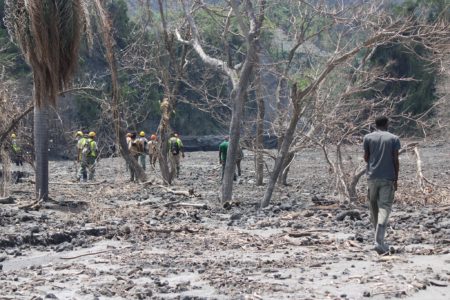
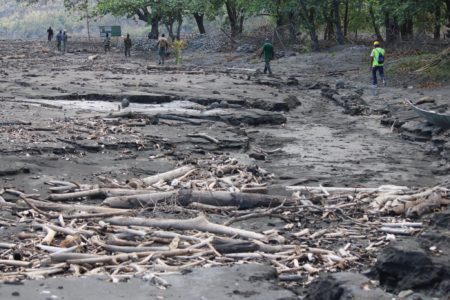
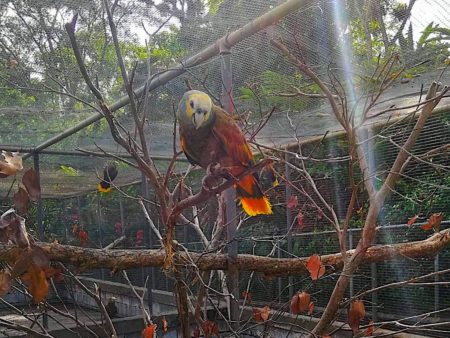
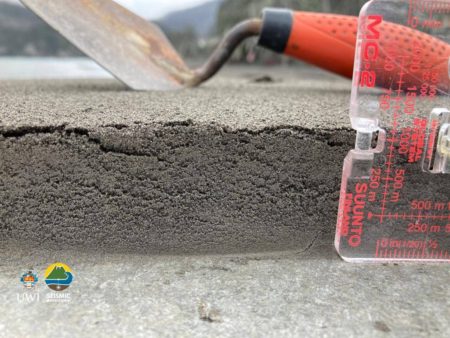








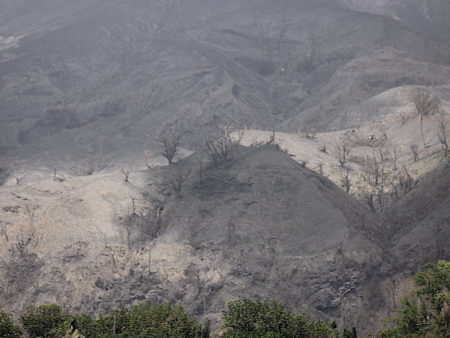
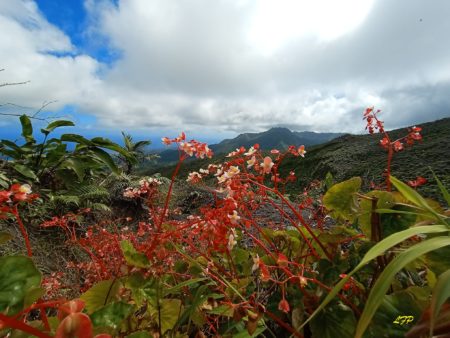
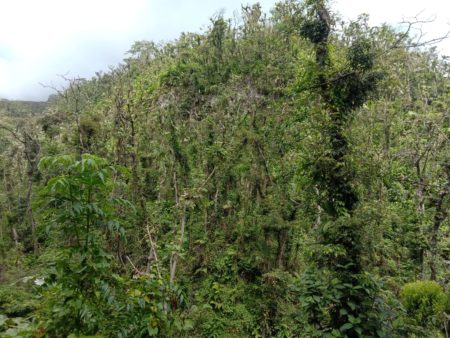
One comment
Comments are closed.